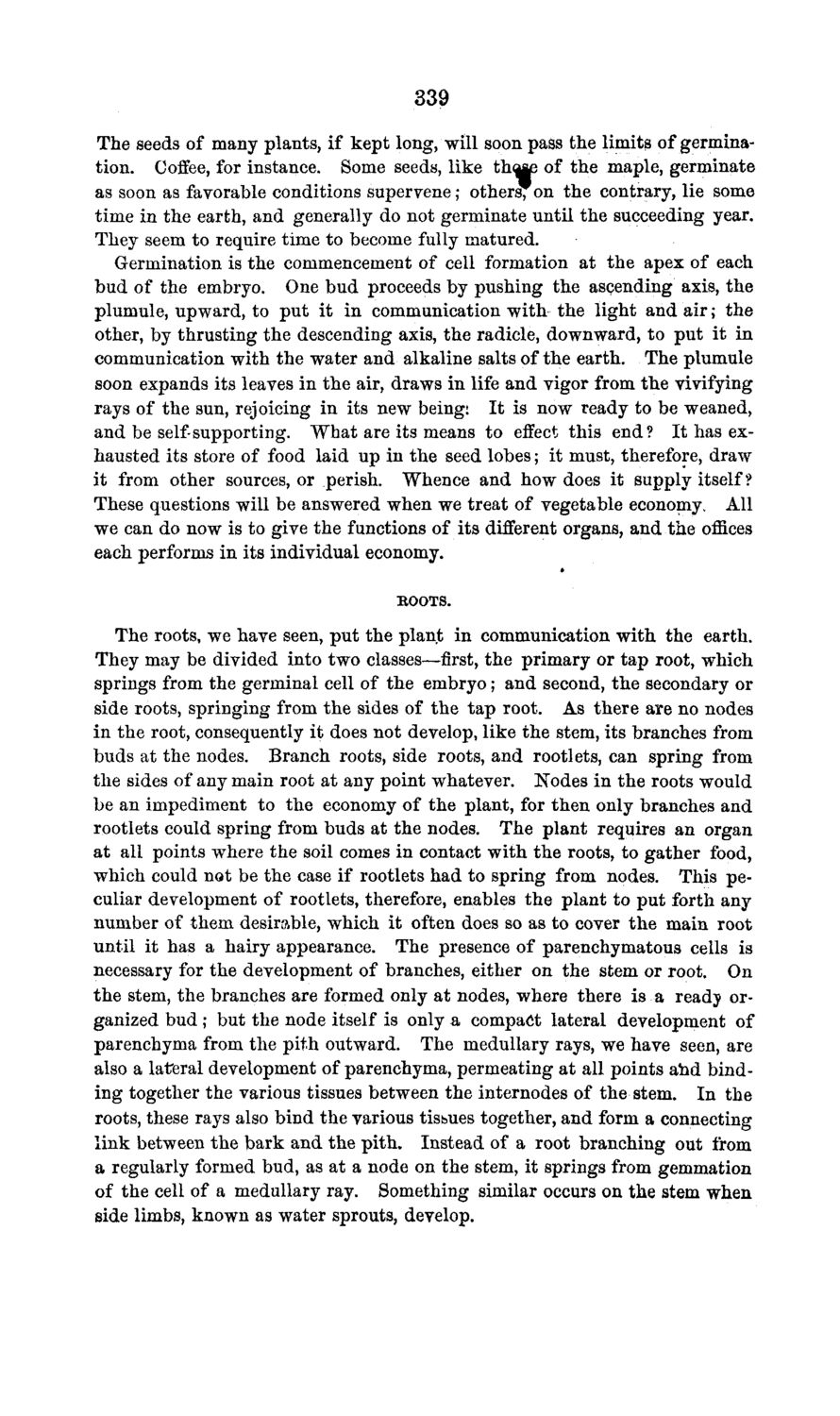| |
| |
Caption: Board of Trustees Minutes - 1869
This is a reduced-resolution page image for fast online browsing.

EXTRACTED TEXT FROM PAGE:
339 The seeds of many plants, if kept long, will soon pass the limits of germination. Coffee, for instance. Some seeds, like th^us of the maple, germinate as soon as favorable conditions supervene; others; on the contrary, lie some time in the earth, and generally do not germinate until the succeeding year. They seem to require time to become fully matured. Germination is the commencement of cell formation at the apex of each bud of the embryo. One bud proceeds by pushing the ascending axis, the plumule, upward, to put it in communication with the light and air; the other, by thrusting the descending axis, the radicle, downward, to put it in communication with the water and alkaline salts of the earth. The plumule soon expands its leaves in the air, draws in life and vigor from the vivifying rays of the sun, rejoicing in its new being: It is now ready to be weaned, and be self supporting. What are its means to effect this end? It has exhausted its store of food laid up in the seed lobes; it must, therefore, draw it from other sources, or perish. Whence and how does it supply itself? These questions will be answered when we treat of vegetable economy. All we can do now is to give the functions of its different organs, and the offices each performs in its individual economy. EOOTS. The roots, we have seen, put the plant in communication with the earth. They may be divided into two classes—first, the primary or tap root, which springs from the germinal cell of the embryo; and second, the secondary or side roots, springing from the sides of the tap root. As there are no nodes in the root, consequently it does not develop, like the stem, its branches from buds at the nodes. Branch roots, side roots, and rootlets, can spring from the sides of any main root at any point whatever. Nodes in the roots would be an impediment to the economy of the plant, for then only branches and rootlets could spring from buds at the nodes. The plant requires an organ at all points where the soil comes in contact with the roots, to gather food, which could not be the case if rootlets had to spring from nodes. This peculiar development of rootlets, therefore, enables the plant to put forth any number of them desirable, which it often does so as to cover the main root until it has a hairy appearance. The presence of parenchymatous cells is necessary for the development of branches, either on the stem or root. On the stem, the branches are formed only at nodes, where there is a ready organized bud ; but the node itself is only a compact lateral development of parenchyma from the pith outward. The medullary rays, we have seen, are also a lateral development of parenchyma, permeating at all points and binding together the various tissues between the internodes of the stem. In the roots, these rays also bind the various tissues together, and form a connecting link between the bark and the pith. Instead of a root branching out from a regularly formed bud, as at a node on the stem, it springs from gemmation of the cell of a medullary ray. Something similar occurs on the stem when side limbs, known as water sprouts, develop.
| |